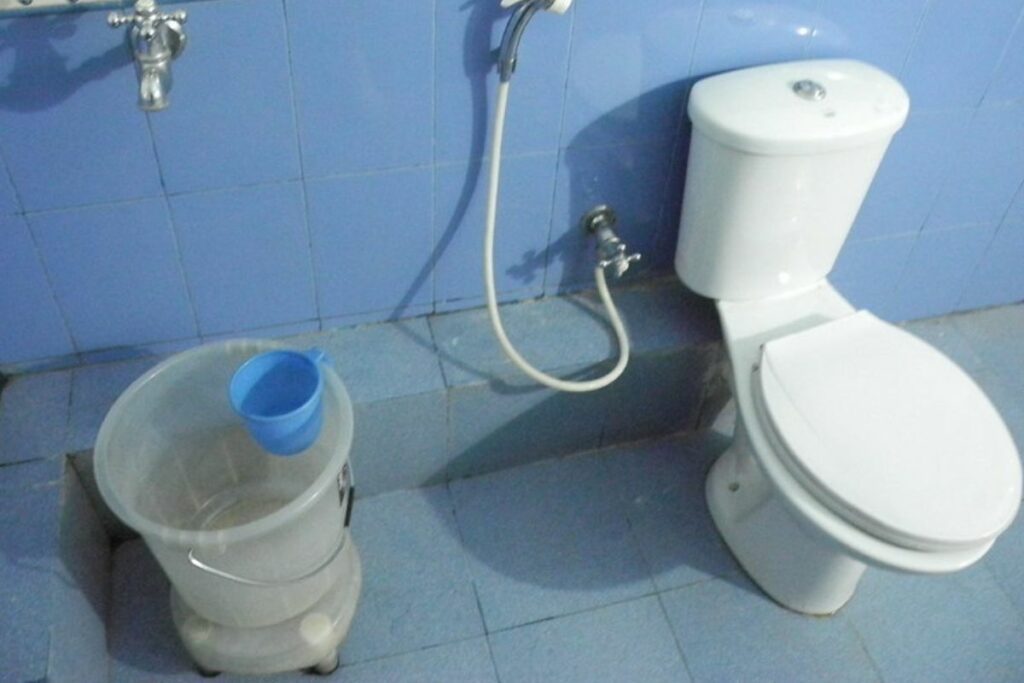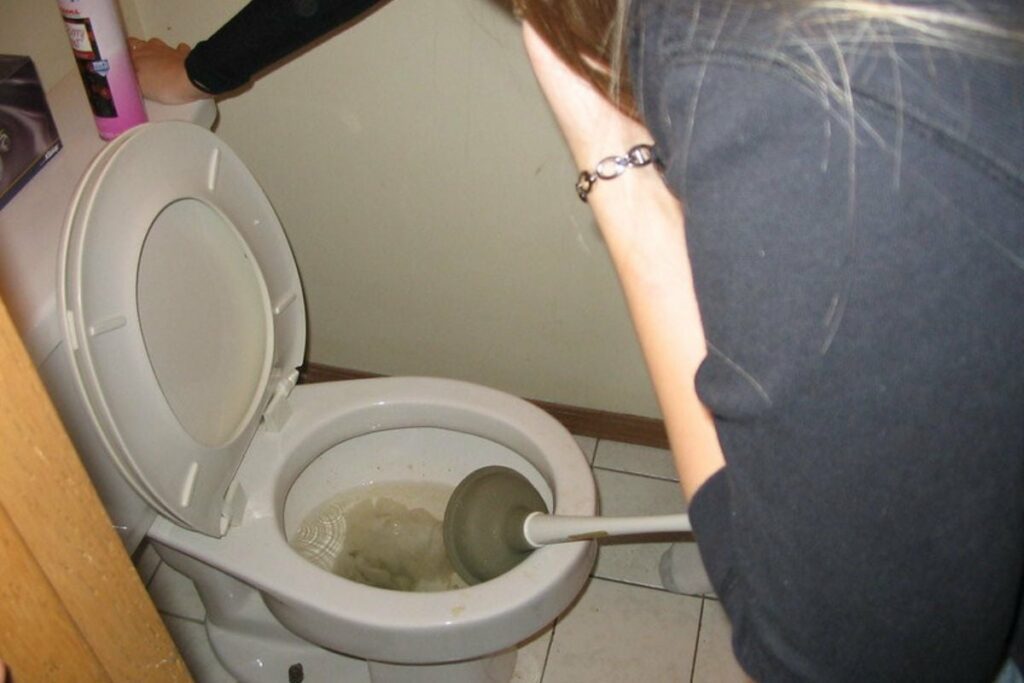You’ll never know the significance of a non-functioning flushing toilet until it breaks down. It amazes what happens to life when the toilet is not flushing as it’s meant to. It can cause a lot of unpleasant odor and anxiety in the house.
So how to manually flush a toilet? There are two main ways to achieve this. You can either use a bucket to pour water directly into the water bowl or pour water inside the toilet tank and flush.
While both ways will help you fix the toilet flushing problem, you might need to know more about the manual flushing of a toilet. How much water do you need? What causes toilets not to flush properly? What options do I have to manage the situation?
This article provides more insight into some of your concerns. Let’s continue to read to find out more.
How to Manually Flush a Toilet?
As briefly mentioned, there are two major ways to flush your toilet manually. We’ll delve further into the procedure to achieve this and what you require, and you’ll also learn about a third option.
Use a Bucket of Water
Research indicates that toilet water is almost 27% of household consumption. However, this depends on your toilet design, and modern toilets are efficient and will save a significant amount of water.
For this option, you’ll need a water bucket and a water source.
Alternative water source
Depending on the main problem causing you to flush manually, you’ll need a water source. This may include;
- Your swimming pool water.
- Water from a reservoir.
- Natural water sources nearby, for example, a river, lake, etc.
- Borrowing water from a neighbor.
- Buying water.

After that, you’ll need to use your bucket to flush manually. On average, older toilet designs use three to seven gallons of water in the tank, and newer models, on the other hand, require approximately 1.6 gallons or less.
Procedure.
- Pour water into a bucket and ensure it is sufficient for your toilet bowl. Modern toilets have smaller-sized bowls, which tend to consume less water.
- Gently pour water into the bowl and increase the amount as your empty the bucket.
- Water should clear the waste; if not, add more water into your bucket and proceed to stage two.
Pour Water into the Toilet Tank
The second option is to fill in water into the water tank and flush it. You’ll need a water bucket, a water source, and a functioning flushing toilet.
This option is ideal if water has been cut off and it’s not flowing into the toilet’s reservoir. There’s the option when the water connection is functioning, but the flushing system breaks.
Procedure
- Remove the top lid of the toilet tank. Some toilets have various shapes and designs of their toilet tanks.
- Fill in a bucket of water depending on the model of your Toilet.
- Gently pour water into the reservoir, ensuring it leaves room for water not to overflow- usually an inch.
- Flush the Toilet normally and refill the tank again for the following user.
The next option is when the toilet flushing system breaks, and you need to fix it.
Pulling the Rubber Flapper/Chain to Flush Manually
Occasionally, the components of the flushing system will malfunction due to forceful flushing, being worn out, or poor quality. You need to understand how flushing operates and the role of each component.
Fixing is simple, and you can do it yourself. You should be ready to get your hands wet. However, please don’t be concerned about the cleanliness of the water since it’s the same water running from your tap.
How Does a Flush Toilet Work?
[ https://www.youtube.com/watch?v=yEBMUDL0apE ]
The toilet tank comprises various players, each contributing to effectively cleaning your Toilet. This includes;
- Siphon: Two vertical tubes manage water inflow and outflow. The inflow tube stands alone while the outflow tube is attached to a flush valve and a flapper.
- Flush Valve: The flush valve opens and closes when the flushing occurs, and it closes the water outlet and begins once the lever is pulled.
- Flapper: The flapper is a rubber seal between the flapper and the pipe leading to the Toilet. It’s often one of the main culprits for a non-functioning toilet flushing system.
- Flashing Chain: This one is the link between the toilet flapper and the handle, and it’s another component that often disassembles, rendering the handle obsolete.
- Float: It’s often a hanging ball that regulates water overflow. It connects to the water inflow tube and cuts off incoming water, ensuring water doesn’t cross a certain level.
- Handle or button: This is the contact point where the flushing is initiated. There are two options, the handle, and the button flushing.
Procedure
- Open the toilet tank cover to identify the problem.
- Locate the chain, linking it to the rubber flapper. Ensure it attaches firmly to both ends. You can find a replacement and have it fixed.
- If the chain is intact, check if the rubber flappers sit correctly on the outlet tube. Adjust it to seal off any water leaks. Depending on your Toilet’s make and model, flappers range between 2″ to 4″.
- Once you’ve fixed this, water will automatically flow into your tank, and you’ll manage to flush.
- Call in a plumber in case you’re struggling to fix this issue.
What Causes Toilet Not to Flush?
The flushing system will break down. You’ll need to identify the problem and fix it. Some causes go beyond the flushing system.

- Clogging: Wet wipes, sanitary towels, and paper are some everyday items that will prevent your toilet from flushing. You’ll need to provide soft tissues that will not clog the sewer system.
- Low water level: Depending on the size of the poop, you’ll need sufficient water to push and flush the Toilet.
- Broken flush chain: This is a critical component of the flushing system and one of the main reasons for a non-flushing toilet.
- Malfunctioning rubber seal: This is another crucial element, and you’ll need to ensure it is appropriately fixed and doesn’t leak.
- Disconnected water flows: Water is a basic necessity for cleaning your Toilet. You’ll need to identify the leading cause of water being cut off and take precautions if the problem persists.
Most of these problems are easy to fix, allowing you to do it yourself. However, if you get some complications, consult a plumber for guidance.
What to Do if the Toilet Does Not Flush Properly?
Identifying the problem is one thing, but finding solutions might not come quickly. Here are a few pointers to help you deal with the toilet flushing problem.
- Water nearby: For ease of access, have a water point nearby to fill your bucket when flushing. Keep the area safe from spillage to avoid slipping and dangerously harming someone.
- Save water: Find ways to prevent unnecessary water usage. You might opt to avoid flushing number one to save it for number two. Or you don’t use too much water to clear marginal waste.
- Pour into the tank: Pour water into the toilet tanks and flush. This option tends to save water rather than using a bucket full. Flush normally.
- Call for help: Consult a plumber or the agencies responsible for water connections.

Frequently Asked Questions?
- Can Your Toilet Flush Poop With a Bucket of Water?
Yes, it is possible. There are various sizes of water consumption per Toilet, and older toilets use 5-7 gallons of water per flush, while modern ones use less than 1.6 gallons.
- How Do You Flush a Toilet With a Button on the Top?
There are often two buttons—a half and a full button. The button connects to the flush valve, which is attached to the flapper rubber using a cable. Once you push the button, the line pulls up the flush valve and opens to let out water.
- Does Pouring Water Into a Clogged Toilet Make It Flush?
Yes, it does. However, pour the water system to avoid spillage and push the waste away. You should run the water gently with forceful dampness at the end.
Take Your Chance
Flushing your toilet doesn’t seem complicated until your system is broken. You’ll need to find alternative options, which is what this article is about.
You’re now equipped to clean your toilet while waiting to fix the problem. Toilets are sensitive and require the highest level of hygiene.
The critical factor is ensuring water storage and that your toilets effectively conserve water.
You can rest assured that your Toilet will not emit inappropriate odors, making you anxious for the next toilet visit.

Amos Christen graduated with a bachelor’s degree in Interior Design from Drexel University — Philadelphia, PA. Since 2003, Amos has worked with top interior design professionals in this area, including architects and interior/graphic/lighting designers. As a skilled interior designer, Amos Christen is highly versed in fine arts and crafts and uses that to supplement his main area of expertise. He often publishes articles related to home décor on several websites, including Sprucetoilets.com, Sprucebathroom.com, and Mybesuitedhome.com. He also contributes to leading interior design magazines.
